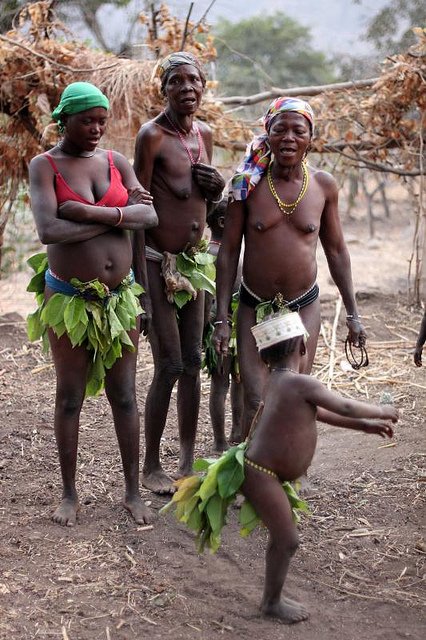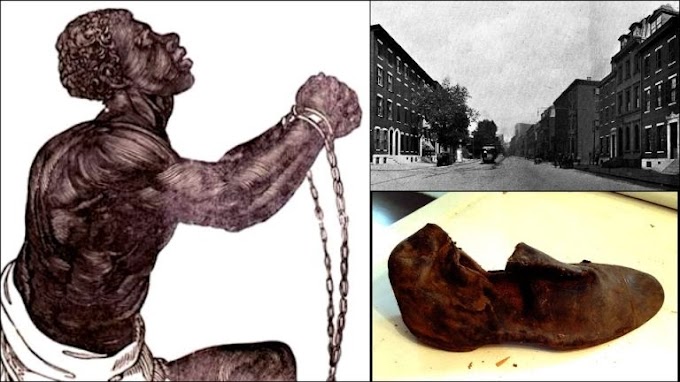In Brazilian cities such Salvador, the first colonial capital of Brazil, the Yoruba influence, dating back to the Trans-Atlantic Slave Trade, is still much tangible. This gives birth to the Òrìsà-worshipping people of Brazil.
Salvador, Bahia state, is one of the many Brazilian areas influenced heavily by West African Slaves, birthing traditional worship of Yoruba gods, festivals and food.
The African slaves from the west, carried along their Yoruba religion with them when they were brought to Brazil.
This religion is referred to as Candomblé by Afro-Brazilians — a religion that seeks harmony with nature.
It is a fusion of African religions combining Yoruba, Fon and Bantu cultures but largely dominated by Yoruba Òrìsà worship. The worship of this religion is carried out in
religious centres called terreiros. At the hem of affairs are priestesses, known as or priests, pais de santo(father of saints). The gigantic statues all around the temples are called the orixás (African gods) that accompanied the slaves from Africa to Brazil.
Mode of Òrìsà/orixá worship
Afro-Brazilians worshippers cherish these gods and have been doing so for over 500 years. Somehow, they realised the fusion of Catholicism with this traditional worship, doctrines and beliefs. In the religious ceremonies,
worshippers dress in the colours of the orixás (white) and place food at the altar before singing special songs and dancing precisely choreographed steps to the sacred drums.
During the ceremonies, worshippers fall into all kinds of trances, which they believe is caused by the
contact and interaction they have experienced with the deity. The Ooni of Ife frequently visits Brazil for the celebration of Yoruba festivals.
There are other variations of African traditional worship across Brazil, and this reflects the different
beliefs brought by different groups of slaves from Africa.
Òrìsà worship is best explained after explained, so a visit to one of the terreiros in Bahia is encouraged.
The Yoruba presence in the Americas is evident in Cuban Santería, Brazilian Candomblé and Xangô, and the
Orisha and Shango religions of Trinidad and Grenada. Less well known are the St. Lucian Kele, or Shango cult, and Jamaican Kumina. These diasporic religions are testimony to the memory and determination of those Africans and their descendants who retained their sacred traditions
often in the face of attempts to marginalize or eliminate them. Some returned to Africa to renew their knowledge. Brazilian Candomblé has been nourished by ongoing contact with its sources of origin. In recent years, Nigerian traditional religious leaders have visited Cuba,
Brazil, and Trinidad.
Many features of diasporic Orisha worship remain close to their origins, including myths, elements of ritual, language, material culture, and the names of deities. Yet changes have also occurred. These reflect the challenges of transmission, societal
constraints on practice, and encounters with other cultures. Today, people of all colors can assume a Yoruba identity through initiation into the religion. Religious teachings formerly handed down solely by word of mouth are now available in written form.
Equivalents for the plants and herbs used for healing and ritual work have been sought out among the American flora.
This capacity to successfully translate an African culture to a new environment—while at the same time absorbing outside influences—was not simply a product of enslavement, as some scholars have suggested. An openness to other cultural traditions was already a feature of Yoruba society. Recent studies of Orisha cults show how their decentralized nature made them suitable for transmission.
However, it must be noted that their vitality in the diaspora contrasts with West Africa, where the cults have largely lost ground to Christianity and Islam.
Read Debbie Ariyo Experience in Cuba:
I recently travelled across Cuba, an island in the Caribbean still developing,
due to the economic embargo put in place by its closest neighbour, the United States of America after the socialist government of Fidel Castro was established in 1959. I spent three weeks travelling across much of the Western part of the country, touring the glorious cities
of Cienfuengos, Trinidad, and of course, the capital, Havana, and taking in the views of the beautiful landscape. Cuba is one of the safest and crime free countries in the world and I felt very much at ease travelling round the country without any fear or feelings of insecurity
There is a lot to learn about Cuba. One of the most intriguing discoveries during my travel is the depth and width of the belief in and practice of Yoruba traditional religions on the island. Anecdotally, more than 80 per cent of the Cuban population are either full-blown
worshipper of different Yoruba Orishas or are Santeria believers. The worshippers or initiates of Orishas can be seen all over the island in their all-white outfits but distinguished by the colours of their special ilekes or beads. The beads are symbolically coloured to denote
key attributes of the Orisha – for example, the colour blue represents, the Queen Orisha, Yemaja. Red denotes Sango, white is worn by followers of Obatala, yellow by worshippers of Orunmila and purple by the believers in Obaluaye.
In Old Havana I visited the Yoruba
Orisha Museum just opposite the Capitol parliament building and met with the Chief Curator of the Centre, Signora Mercedes Omilana Armenteros who showed me round and explained its purpose. “The Orishas are seen as dispensers of great blessings”, she emphasised. The museum is
dedicated to all the major Cuban-Yoruba deities with images of each and explanation of their roles and attributes depicted. These range from Obatala, to Orunmila, Yemaja, Oya, Sango, Ogun, Obalufon and so on. As a Yoruba myself, I was transfixed by the deep strength of pride and belief in Yoruba traditional customs among the Cuban people and their readiness to share this knowledge with others.
A range of questions went through my mind as I learnt more about Cuban-Yoruba culture. “How was it these religions survived centuries of slave trade and slavery”? Most importantly, “why do Yoruba-Cubans still have strong beliefs in Orishas while many Nigerian-Yorubas do not?”
It was said that during slavery on the Island of Cuba, the slaves — most of whom were trafficked from the Yoruba Kingdom — would use incantations and drum beatings to communicate and relate with each other. This irked the Spanish slave traders who were equally concerned
about the success of the slave revolt in neighbouring Haiti at that time and feared the same fate in Cuba. A compromise was reached: a mixture of the African religions identifying the strength of Yoruba spirituality and Catholicism would be forged. This is why Yemaja is
seen as the Regna (the Queen Mother) while other Yoruba deities are regarded as Patron Saints in Santeria religion.
I was able to visit a Santeria Church La Virgen De Regla Yemaja on the Isle of Regla just 10 minutes on the ferry from Old Havana. It is the church of Yemaja in
Santeria religion. A diverse mix of people have come to pray to Yemaja inside the church. I was amazed by the diversity of the worshippers — blacks, whites, mixed races and latinos all came to pray and sought blessings.
On the perimeter of the church sat same babalawos or
worshippers. They allowed me to take pictures. They made some divinations for me with their ‘opele’ made of four coconut shells. Each time the opele opened, which I was told means ‘alafia,’ peace.
The practice of Yoruba religion is so strong in Cuba one can even see ebo
(sacrifices or offerings) placed in strategic places and street intersections and I saw many instances of this in Trinidad and Havana. Trinidad, a key, historic city towards the east of the Island was a key stranglehold of the slave trade
with people trafficked there to be exploited for their labour on the array of sugar plantations, the ruins that still dotted the area.
Many Orisha practitioners or believers also have imageries (or ‘idols’) of their deities even in their homes. I was visiting the Franciscan
Convent in the Centre of Trinidad when a man offered to sell me some Cuban cigars. “I have them in my house, come and see,” he said. I had no interest in buying cigars, but out of curiosity, I followed him to his place just down the road. His family was at home.I was surprised
to see an image in his living room. I asked him who that was. “Oh, that is Ogun,” he told me with the utmost pride anyone could muster. I was flabbergasted.
On the streets of Old Havana, I witnessed many processions by worshippers of different deities, including Obaluaye,
The message for me as I left Cuba is the importance of holding on to what makes one authentic and real. 300 years after the first people were trafficked and enslaved far from their homes in the great Yoruba kingdom, what kept them real was the commonality and the depth of
their beliefs in their religions. What helped them survive the evil and brutality of slavery up till this day was their strong beliefs in the power of their Orishas. This strong belief has been passed on and retained through the generations.
Sadly, most Yoruba people in
Nigeria today who have imbibed the Abrahamic religions now regard beliefs in the Orishas as primitive, pagan, uncouth, unGodly and backwards. Some would ascribe this to the effect of colonial brainwashing which in itself is a form of mental slavery. Personally, I see the
Yoruba Orishas as nothing more than the Elemental Beings who are totally obedient to the Will of the Creator. We should celebrate and not discard them. The
Yoruba-Cubans have demonstrated how and why this should be the case.
• Ariyo is a solo-traveller and lives in London









0 Comments